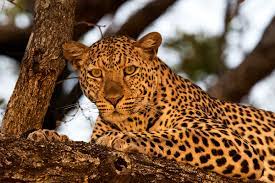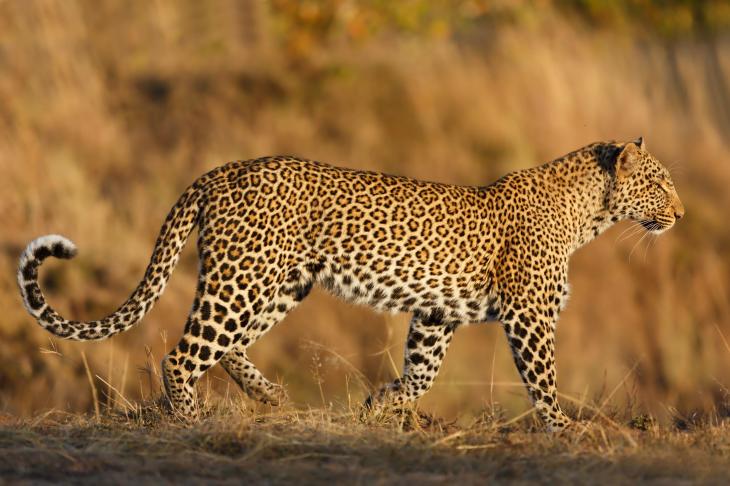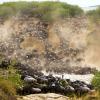Here are 5 intriguing facts about the leopard (Panthera pardus)
Lions are larger than leopards, but both of these great animals are among the largest on the continent of Africa. Because of its unique mixture of grace, power, and elusiveness, it is the most celebrated of the “Big Five” animals. Its frame is far heavier than that of the similarly-sized cheetah, and it is found in a wider variety of habitats, including lush rainforest and arid semi-desert. It also varies in weight, ranging from 40 to 90 kg.
Widely spreading through Africa, from the deserts of Sinai to the snows of northern China, the most ubiquitous and successful large cat is the leopard. Leopards feed on a wide variety of animals, from tadpoles to adult wildebeests. Their astounding stealth enables them to survive in populated areas, from Nairobi's outskirts to Mumbai's suburbs.
informative facts about the Leopard
A common leopard behavior is to drag prey into a tree where they can digest it over several days at their leisure. Their extraordinary power allows them to carry large carcasses, such a giraffe, which weighs 125 kg at a height of five and a half meters. The behavior only happens when there are other huge predators to compete with, namely lions and hyenas.
The leopard is a member of the family Felidae, which originated in Asia, and it is one of five "large cats" of the genus Panthera, all of which come from this one family. In East Africa and South Asia, fossils of its ancient predecessors dating back to the Pleistocene epoch (about. 3.5–2 million years ago) have been unearthed. Modern leopards emerged in Africa between 0.5 and 0.8 million years ago, and they are considered to have migrated to Asia between 0.3 and 0.2 million years ago

Black panthers are melanistic leopards, sometimes known as black leopards, because of their melanism, which is an inherited genetic feature. Forested regions on the equator and slopes of mountains such as Mount Kenya are where they are most frequently found. Melanistic leopards produce much smaller litters than regular leopards, since mating with other melanistic leopards decreases the litter size.
A 5.5 meter Burmese python in south-east Asia recovered an adult leopard from its stomach.

Leopards are generally averse to humans, but have been known to occasionally hunt humans as prey. India has seen it most frequently. While hunting with Jim Corbett in his book, The Man-Eaters of Kumaon, Corbett explains how he managed to shoot several people who had taken numerous victims. Additionally, there were other more wild leopards that killed more than 125 people, such as the Leopard of Rupa Prayag, and the Panar Leopard, which is said to have murdered as many as 400 people. Corbett postulated that the leopard may have developed a taste for human flesh during a cholera outbreak due to the accumulation of corpses in the jungle. There was a RupaPrayag leopard that had broken into a pen where 40 goats were being kept. Instead of harming the animals, the leopard killed and ate the sleeping 14-year-old boy who was assigned to protect them.




